Secular AA is excited to host the 2024 International Conference of Secular Alcoholics Anonymous (ICSAA) from September 20-22 at the Doubletree Hotel at Universal Studios, Orlando, Florida. This event promises to bring together a diverse community of alcoholics committed to secular recovery within the AA framework. The conference will be held in person for the first time in 6 years. It kicks off on Friday afternoon and wraps up after lunch on Sunday. Hosted by the OMAGOD group, there is a very full program and, of course, Universal Studios across the street. Attendees will enjoy a series of workshops and networking opportunities designed to enhance their recovery in a supportive and inclusive environment.
The first ICSAA was in 2014 in Santa Monica; the second was in Austin, with 400 attending. In 2018 the venue was Toronto, and since then, we have not been together in person. Which is not to say that the conferences didn’t happen; zoom in fact allowed us to expand the program and include more international members in both 2020 and 2022.
This year’s theme is “Living in the Solution.” Squeezing over 40 sessions into a few short days, means that there is always something of interest happening. And for people who need a break, there will be dedicated coffee and meeting spaces. All in all, the conference provides fellowship, keynote speakers, workshops, panels, entertainment, and even a lunch or two!
Speaker sessions from the Authors
This year, the conference will feature a lineup of distinguished speakers with valuable insights into secular recovery.
-
Dr. Allen Berger, PhD is a talented psychotherapist and considered by most the leading authority on emotional sobriety. His pioneering efforts in understanding emotional sobriety has helped us understand the critical role emotional sobriety plays in optimal recovery. Dr. Berger is also a popular recovery author who has written extensively about the experience of recovery, the important topic of emotional sobriety, integrating modern psychotherapy and the 12 Steps, the psychological forces operating in the 12 Steps, and the psychological forces that undermine recovery.
-
Beth Aich, author of We’re Not All Egomaniacs: Adopting the Twelve Steps for Alcoholics with Low Self-Esteem, will speak on how alcoholics who need to build, not deflate, their self-esteem can modify the Steps. Using her methods, an alcoholic can build and strengthen their sense of self; can learn to feel better about themselves, not worse; and can and grow from a place of feeling unlovable into a strong sober person, who is no longer dependent on alcohol or external validation to feel good.
-
Joe C, author of Beyond Belief: Daily Musings for a 12-Step Life, presents on the scientifically studied conceptual framework for recovery and thriving through mental health challenges and addiction, C.H.I.M.E.: Connection, Hope, Identity, Meaning, and Empowerment. AA is part of a larger recovery peer2peer community. Evidence shows that AA works for over half that give it a go; what about the others: Refuge Recovery/Recovery Dharma, She Recovery, Women for Sobriety, Life Ring, SMART Recovery? Evidence shows that, while none have better outcome rates than 12-step approaches, the same good evidence-based results we find from AA can and is also found in all mutual-aid support communities.
-
Noeréna Abookire, Ph.D. will lead a session titled, “12 Stepping Through Loss, Change and Grief While Preventing Relapse”. Noeréna opens the hearts and minds of participants by sharing her personal journey focusing on love over fear as she and her husband Ray Whitfield remained sober while traveling his journey from diagnosis to death. Noeréna has been able to maintain over 26 years in recovery through active involvement in Secular AA . Her story and her presentation is an inspiration by example that relapse can be avoided even in the most stressful times. In an entertaining way she will introduce strategies that support the protection of recovery from loss, change and grief while working a Secular 12-Step program.
-
Glenn Rader is the author of two books: Modern 12 Step Recovery; and STOP – Things You MUST Know Before Trying to Help Someone with Addiction. He will facilitate a session on the thought-provoking subject of Cognitive Distortions, a major cause of “Stinking Thinking”. Understanding Cognitive Distortions will help take your recovery to the next level. It is practical information that can be used in your day-to-day interactions with people, places, and things.
-
Dr. Jamie Marich, author of books including Trauma and the 12 Steps, Trauma Made Simple, Dissociation Made Simple, Dancing Mindfulness, EMDR Therapy and more, will offer both personal and professional reflections on what it means to trauma-inform the 12 Steps, delivering best practices on how to make the Steps and Concepts of recovery as applicable and as user-friendly for the widest possible audience. Special attention is paid to the impact of spiritual abuse (using God, Higher Power, or any spiritual/ recovery concept as a weapon to demean and to control others) in the development of addiction, and how it can show up in recovery circles.
-
Jeffrey Munn LMFT, author of Staying Sober without God, will lead three workshops titled
-
Science-Based Mindfulness with hands-on practice in guided meditations and insights into the science of mindfulness and how it can be applied to everyday living:
-
Co-Occurring Disorders with strategies for managing a variety of mental health conditions such as anxiety, OCD, PTSD, attachment disorders, and more, emphasizing holistic and integrated approaches to recovery informed by the latest research, with specific coping strategies, and tips for finding quality mental health treatment; and
-
Navigating Recovery as an Atheist/Agnostic, a Q&A workshop.
-
Sneak Preview Conference Panels—A Non-Exhaustive List of What is Planned
-
Long-Term Recovery. This will be a Q&A panel with long timers (25+ years) sobriety sharing their secular experience strength and hope.
-
LGBTQIA+ Gender, Sexuality, and Sobriety in AA. Looking at the dual themes of ‘tolerance and diversity’, as well as the experience of a person who identifies as a sexual and/or gender minority within AA. We look forward to seeing lots of diverse folk to share our experiences within AA.
-
The Young Faces of AA: Stories of Early Entry and Ongoing Recovery. Embarking on the path to sobriety at a young age and continuing the journey into later years presents a rich tapestry of experiences, challenges, and triumphs. This presentation brings together the stories of individuals who have embraced Alcoholics Anonymous (AA) at various stages of life. From the fresh perspectives of youth to the wisdom of older members who came into the program young, we will delve into the unique insights gained from sharing experience, strength, and hope across generations of recovering members.
-
Making the International Women’s Conference More Accessible and Inclusive. This group was formed to act against unequal treatment of secular AA that is provided to other special interest groups. We are a group of determined women engaged in an effort to be part of the annual conference, where we can be heard and seen by thousands of people around the world who need to hear our message…you can get and stay sober without god in AA.
-
Our (Troublesome?) Relationship to A.A. Literature, Experience, and Strategies for the Future. Discuss our relationship to AA literature, including the current GSO controversy about changing “the founders” writings. Alternate steps and the problems they bring. Can the BB be rejected entirely and still be AA? Is new literature like “The God Word” being made available, and are other strategies necessary? And more!
-
The Art of Living Sober: Stoicism and Meditation in Recovery. Discover how Stoic philosophy and meditation can empower your recovery journey! Join A Secular Meditation Meeting (ASMM) for a panel discussion, featuring alcoholics who have found strength and resilience in Stoicism’s ancient wisdom and meditation. After a brief introduction to ASMM, panelists will share how the different principles of Stoicism are used in their sobriety and their experiences in the art of living—sober.
-
Presentation on Hank Parkhurst. Who is Hank Parkhurst and his role in the founding of AA and why is he forgotten?
Come roll up your sleeves and participate in your own recovery with us! Hands-on Workshops will include:
-
Legislative Remedies to Prevent State-coerced Participation in Orthodox 12-Step Programs. A briefing on how Eric put Michigan House Bill 4690, the Secular Recovery Bill, on the agenda of the state legislature. (It may be a law by 2024.)
-
Limitless Expansion through Practice of THESE Steps, a Lifelong Adventure. Jeb celebrated 46 years of sobriety and he is a retired Licensed Professional Counselor. He will explore what has been for him the most important part of Step 12 where we continue to practice all the Steps in our daily lives, what we learn as we clean up the wreckage of our past from our experience, past and present. This session will present a Personalized Version of the Steps with questions we can ask ourselves in measuring our progress.
-
Slogans in AA. Slogans & Bumper Stickers – This interactive workshop is designed to bring new meaning to some of those phrases we love to hate.
-
Atheism as Affirmation in Sobriety. The purpose of this workshop is to propose that atheism, far from being negative, or concerned with the absence of things, is affirmative and sometimes courageous in its insistance on the responsibility of the individual to define the scope of our recovery by ourselves, for ourselves, without reference to the delusional fantasies sometimes proposed as a path toward sobriety. The workshop will go into this contention at depth from the perspective of a lifelong determined atheist with successful long-term sobriety.
-
How to Start a Secular Meeting in the Bible Belt. After coming out in AA as an Atheist, Glenn attended the 1st International Secular Conference in Santa Monica, California where he learned how to start a new secular meeting. When he returned to Jacksonville, Florida, Glenn started a new secular meeting, went on to become district rep, and brought Secular AA workshops to the Florida State Convention. He will talk about the journey and how you can do it too!
-
Emotional Sobriety. Emotional sobriety: What does it look like? How do we behave? How long does it take?
-
Broken Anonymity. This workshop will focus on the primary dangers of broken anonymity in 12 step fellowships. Topics will include the dangers of privacy breaches and how this can expose individuals to judgment or harm from employers, family, or the public. Maintaining anonymity is not just a tradition but a fundamental principle designed to protect individuals and ensure the success of recovery programs.
-
Practice yoga with Nell and Joseph, who will share their practice all three days of the conference. All levels welcome! Mats provided on a first come first serve basis.
-
Sound Therapy with Singing Bowls. Healing though sound therapy. Meditate with Terra and Joseph while experiencing the healing vibes of Tibetan ‘singing bowls’ and various other mindful instruments.
-
Working Undercover (or Exposed!). Many of us stay involved in “traditional” AA; in fact some of us only (or at least mainly) go to such meetings and are active in AA General service. Of these, some are “out there” as unbelievers, others not so much. Some see Secular AA as an attempt to evolve the culture of the fellowship we love from within rather than any kind of alternative. Many of us don’t. Let’s discuss tactics, war stories, experience and explore presuppositions and challenge them.
-
Addiction, Separation from Family, and the Path to Healing. Drawing from research, as well as using his own professional and lived experiences, David Bohl will offer a discussion on the link between separation from family of origin and addiction and discuss challenges and methods of recovery management.
-
Write Recovery. From newbies to old-timers, writing becomes an essential part of our recovery. What is holding you back from telling your story? From journaling to inventory, and many other paths along the way we find ways to remove the wreckage of the past and build a firm foundation based on our own story. In this workshop you will practice tools to help everyone, no matter what your comfort level regarding writing, share their experiences with others.
-
Poetry Jam. Create and share poems based on recovery-related prompts. Or, simply listen and enjoy! Explore how our creative sides can open our perspectives on life’s challenges, and meet other creatives in recovery.
-
Candlelight meeting. Yes, candle light meetings aren’t typically something we can do virtually…but why not do this in person? Fake candles will be provided and we will remember that there is always light in the dark.
Come Early—Stay Late
Outside of the conference, Orlando waits to greet you. Look for the I-RIDE Trolley, a hop-on-hop-off service stopping very close to the conference hotel. This should allow meeting-goers to avoid renting a car. Fares are $2, and the service runs 8:00-10:30 every day. I-RIDE stops at all of the sites Orlando has to offer, from entertainment to shopping to fine dining.
Secular AA, which supports the global community of atheist, agnostic, and freethinking AA members, continues to foster a version of AA that remains effective and relevant to an increasingly secular society. This conference is an extension of that mission, providing a platform to share experience, strength, and hope with secular-minded members from around the world.
To register and book a room, visit our website at aasecular.org/icsaa2024.
Contact Information:
ICSAA Orlando 2024
[email protected]
This article was edited and compiled by Jenny Massachusetts/Rhode Island. She is on the Program Committee for the Conference. Jenny attributes her ability to stay sober to the help she received in the community she found in Secular AA.
For a PDF of this article, click here: Secular AA Hosting International Conference in Orlando.
The post Secular AA Hosting International Conference in Orlando first appeared on AA Agnostica.

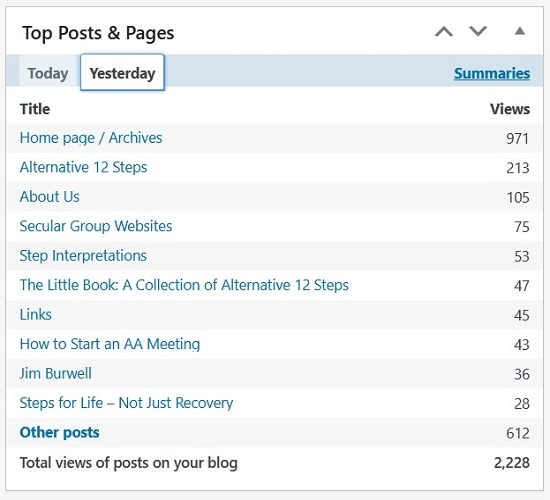

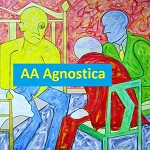

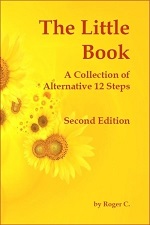


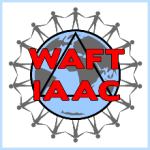
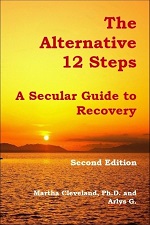


 Moreover, Alcoholics Anonymous is learning to accommodate we secular people. In 2014 our friend life-j wrote an article,
Moreover, Alcoholics Anonymous is learning to accommodate we secular people. In 2014 our friend life-j wrote an article, 

 Roger C has been an alcoholic in recovery since March 8, 2010. Later that summer he joined the Toronto group Beyond Belief, at the time the only secular AA meeting in all of Canada. In September, a second Toronto group, We Agnostics, was launched. The two were booted out of the Greater Toronto Area Intergroup on May 31, 2011. And that’s exactly what inspired Roger to launch a website in June of that year that became AA Agnostica.
Roger C has been an alcoholic in recovery since March 8, 2010. Later that summer he joined the Toronto group Beyond Belief, at the time the only secular AA meeting in all of Canada. In September, a second Toronto group, We Agnostics, was launched. The two were booted out of the Greater Toronto Area Intergroup on May 31, 2011. And that’s exactly what inspired Roger to launch a website in June of that year that became AA Agnostica.

